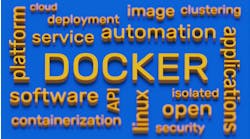How are PLC R&D teams affected by software-defined automation?
Key takeaways for controls engineers
- Increased PLC data handling requirements: PLCs are evolving beyond simple logic control. Software-defined automation is driving a need for PLCs to handle significant data processing and IT connectivity. This means controls engineers must become proficient in integrating technologies like OPC UA, MQTT and SQL directly into PLC systems.
- Importance of open industrial protocols: Protocols like EtherCAT and OPC UA are experiencing significant growth and are crucial for software-defined automation. Controls engineers need to prioritize understanding and implementing these protocols to ensure seamless communication and data exchange between machines and IT systems.
- Focus on connectivity and integration: Machine builders must prioritize platforms that maximize connectivity across all stages of automation deployment. This includes compatibility with mechanical design software, digital twin platforms and factory-floor devices.
- Software-defined automation as a bridge between OT and IT: Software-defined automation facilitates the convergence of operational technology (OT) and information technology (IT). Controls engineers need to understand how to leverage this convergence to improve machine performance and data utilization.
Thomas Kuckhoff is product manager of core technologies at Omron Automation Americas.
What is the primary focus of software-defined automation (SDA)?
Thomas Kuckhoff, product manager, core technologies, Omron Automation Americas: The primary focus of software-defined automation is machine performance. Powered by the advancements on the IT side of automation, software-defined automation focuses on machine performance through automation that is robust, collects holistic data and maximizes factory talent collaboration.
What are the primary benefits of software-defined automation?
Thomas Kuckhoff, product manager, core technologies, Omron Automation Americas: The primary benefit of software-defined automation is the deployment of new technologies quickly—eliminating the latency between R&D validation and factory-floor deployment. This not only helps operations teams to continuously find new efficiencies, but also decreases the incremental costs commonly associated with keeping up to date.
How does software-defined automation figure in the convergence of IT and OT?
Thomas Kuckhoff, product manager, core technologies, Omron Automation Americas: At the heart, software-defined automation is the connection between different technologies. Where globally open industrial protocols on the OT side, such as EtherNet/IP, EtherCAT, CIP Safety, Fail Safe Over EtherCAT and IO-Link, allow teams to not only connect current machines to each other but also create more robust data repositories on the IT side with database connectivity, such as OPC UA, MQTT and SQL.
Which standards and protocols will be affected most or increase/decrease in use because of software-defined automation?
Thomas Kuckhoff, product manager, core technologies, Omron Automation Americas: While there are plenty of open protocols that have increased in adoption, OPC UA and EtherCAT are two that are worth noting. OPC UA has seen a 9% compound annual growth rate over the past five years and EtherCAT has seen a 12% compound annual growth rate. As we look forward, we can expect both of these and MQTT to continue to gain adoption across a wide range of automation fields.
Get your subscription to Control Design’s daily newsletter.
Which components will see the biggest impact from software-defined automation?
Thomas Kuckhoff, product manager, core technologies, Omron Automation Americas: The programmable logic controller (PLC) will continue to see its R&D teams affected by software-defined automation user trends. Historically, PLCs have not been required to manage both logic control and data processing, where teams have deployed gateways or data collectors to bridge the gap between current automation architecture and future state designs. Larger facilities are looking to become data-centric and in doing so are requiring the PLCs to have as much OT as IT connectivity. Where OPC UA, MQTT and SQL are becoming standard rather than an add-on, allowing all spares in the crib, and all new design specifications to have database connectivity as standard.
How can machine builders prepare for and leverage software-defined automation?
Thomas Kuckhoff, product manager, core technologies, Omron Automation Americas: Machine builders can look at platforms that maximize connectivity as standard for every stage of the automation deployment process. From design to commissioning and scaling, the more compatibility with mechanical design software, digital twin platforms and factory-floor devices, the quicker machine builders can create, commission and scale their automation to new customers.
How does software-defined automation build on existing IT and network infrastructure in factories and plants?
Thomas Kuckhoff, product manager, core technologies, Omron Automation Americas: Deploying new technology completely incompatible with existing network infrastructure puts an almost insurmountable barrier between the factory and the ability to make better production predictions. Software-defined automation acts as a bridge between where current IT and network infrastructure is today and where it would need to be for more powerful technologies to be deployed without compromising network security. Software-defined automation begins building this bridge by giving IT teams ways to manage network security through tools such as subnets on controllers, where the term subnet denotes different network segments that may use the same subnet mask.
Tell us about your company’s state-of-the-art product that involves software-defined automation.
Thomas Kuckhoff, product manager, core technologies, Omron Automation Americas: The Omron Sysmac automation platform is at the very core of Omron software-defined automation. This all-in-one automation platform uses globally open industrial protocols on controllers, such as the NX102, and integrated development environments, such as Sysmac Studio, to design, commission and scale robust automation.
Omron Sysmac Studio embodies software-defined automation through its ability to integrate with mechanical design software, such as SolidWorks, Autodesk and ePlan; its connectivity to digital twin simulation environments with universal scene description (USD) output formats; and its quick programming with globally open industrial protocols such as IO-Link, EtherCAT, Fail Safe over EtherCAT, CIP Safety, and EtherNet/IP.
Omron NX502 controls logic with a quad core CPU and manages data as standard with OPC UA, MQTT and SQL connectivity out of the box.






